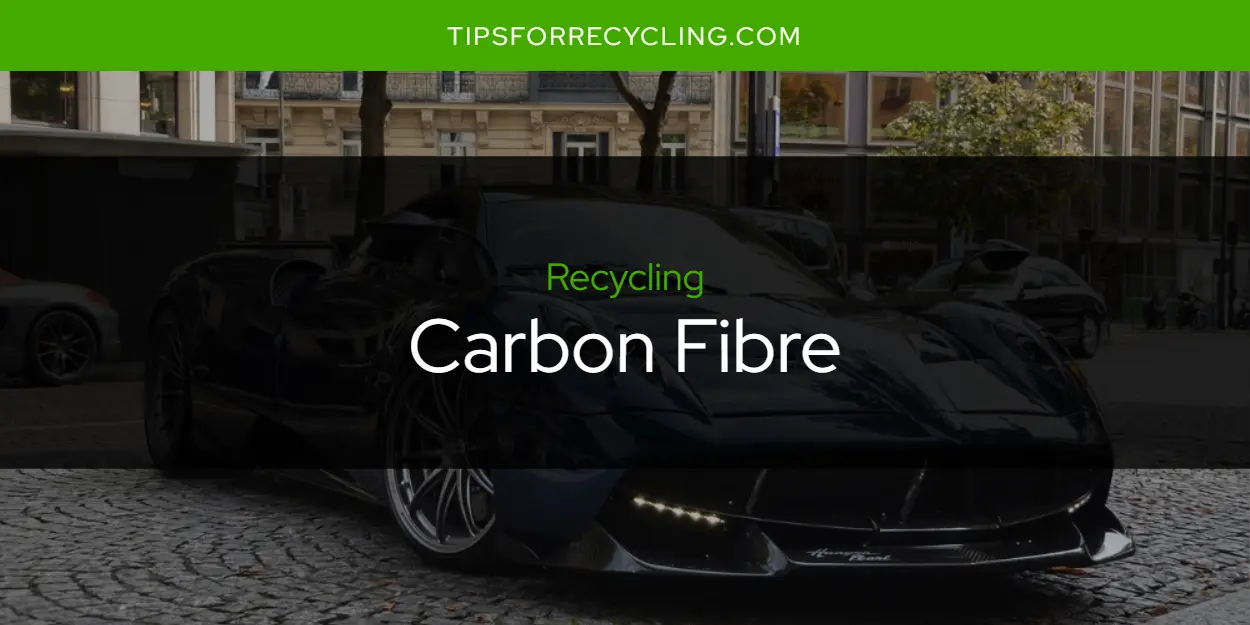Is Carbon Fibre Recyclable?

Carbon fibre is a material used in many industries and products around the world, from cars to airplanes. It's strong, lightweight, and durable - but is it also recyclable?
In short, yes it is! Carbon fibre can be recycled in a number of ways, depending on the type of fibres being recycled. The process usually involves breaking down the fibres into smaller particles and then using these particles to make other products.
See the below map for locations where you can recycle carbon fibre.
Absolutely! Recycling carbon fibre can be a great way to make money as there are a number of companies that specialize in buying and selling recycled carbon fibres. These companies can help you get a good price for your scrap carbon fibres - so if you have any lying around, why not give them away for recycling?
Similarly, see if you can recycle carbon fiber.
There are numerous benefits to recycling carbon fibres. Firstly, it helps reduce the amount of waste that goes into landfill sites or is otherwise discarded - which is beneficial for both the environment and our planet as a whole. Secondly, recycling carbon fibres can help to create new jobs in an industry where there’s always a high demand for skilled labour. Finally, recycling carbon fibres can also help reduce greenhouse gas emissions by reducing the amount of energy needed to produce new versions of this material.
Similarly, see if you can recycle polycarbonate.
Carbon fibre collection typically begins with manufacturers who collect scrap materials from their production processes. From here, these materials are either shipped directly off to specialized recyclers or sold through intermediaries who then sell them on to larger companies that specialize in recycling fibres. Depending on where you live and how accessible recycling facilities are near you, you may also be able to bring your own scrap carbon fibre directly to one of these sites for them to sort through and recycle.
Similarly, see if you can recycle concrete.
After being collected for recycling purposes, the carbon fibre will usually go through a few different processes before being turned into something new. This usually involves breaking down the fibres into smaller components before they’re spun together into yarns which can then be used as raw materials in other products. Some examples include carpets, upholstery fabrics, insulation materials, boat hulls and even composite plastics!
Similarly, see if you can recycle cardboard.
As with any industry that deals with large amounts of waste materials such as scrap metals or plastics, there are always going to be challenges associated with processing these items into usable form again. One particular challenge faced by those looking at recycling carbon fibre is that most methods require some degree of manual sorting before they begin processing – which incurs additional costs and requires more time than automated methods do. Additionally, certain types of carbon fiber may not be suitable for certain applications – meaning recyclers must find new uses or buyers for their product each time they receive a batch of scrap fibers from manufacturers or other sources due to compatibility issues with existing projects/products.
Similarly, see if you can recycle chicken wire.
All in all, while there may still be some challenges associated with efficient processing and sorting when it comes to recycling carbon fiber – this material definitely has an environmental benefit as it reduces landfill waste while creating jobs within industry circles too! If you have any old scraps lying around at home or work why not see if they’re suitable for recyling – after all every little bit counts when it comes helping preserve our precious resources!